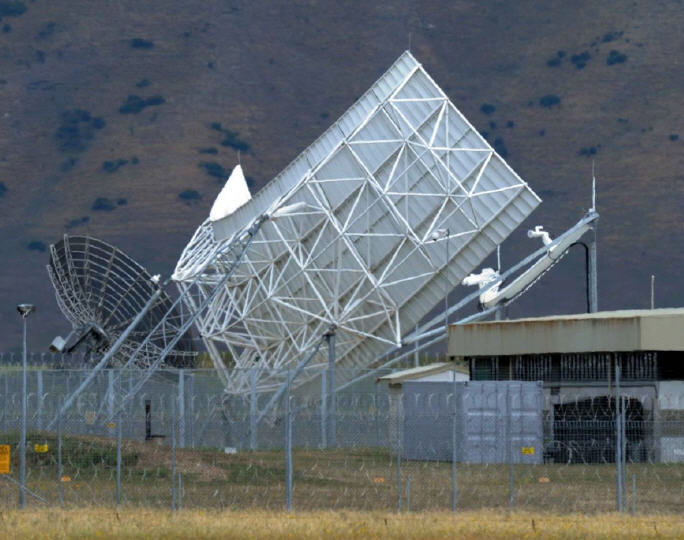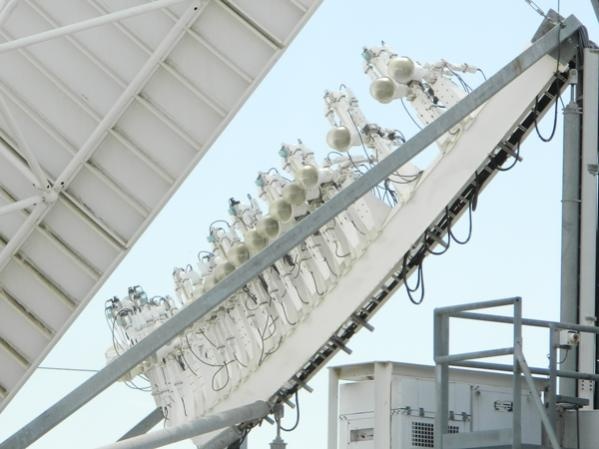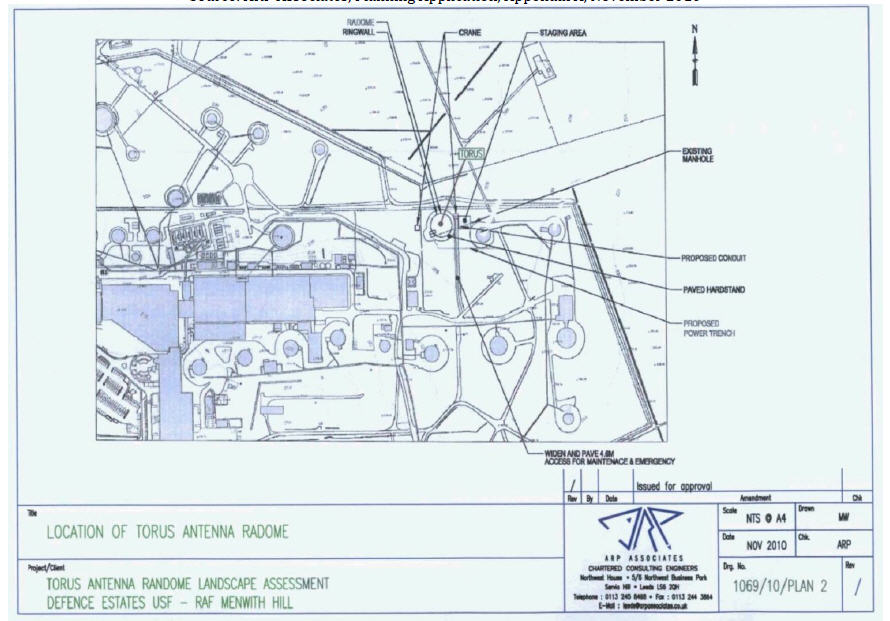NSA's ECHELON capacity doubled since 2000, set to quadruple
The now-confirmed ECHELON communications satellite surveillance system run by NSA's and its "Five Eyes" allies has doubled in scale since 2000, and could quadruple, according to open research triggered by Edward Snowden's revelations. The expansion has been further enhanced by linking in other FORNSAT (foreign satellite) interception sites run by NSA's allies in secret pacts, including Germany, France, Spain, Sweden and Denmark.
When it became fully operational in 1974, ECHELON consisted of two sites, one in the UK and one in the US, equipped with three large tracking antennae covertly downlinking telegraph, telex and fax signals from western Intelsat communications satellites. A quarter century later, by 2000, there were about 120 antennae at 17 Five Eyes sites spread from the South Island of New Zealand to Hokkaido, northern Japan.
|
Torus antenna at New Zealand sigint station IRONSAND (Waihopai, South Island) |
Torus antenna used at civil DirecTV control centre, Los Angeles |
Planning application for Torus antenna at Menwith Hill Station, UK |
There are now 232 surveillance antennae, according to research by a group of Canadian and Australian academics, in which I participated. The count was carried out using civil satellite imagery available on the Internet. Our work also identified the deployment of a major new surveillance technology called Torus, which enables multiple satellites to be targeted at once. (The same technology is also used by some civil and military broadcasting systems.)
Torus antenna have unique "quasi-parabolic" shapes enabling them to simultaneously collect signals from up to 35 earth orbiting satellites at once. In theory, therefore, the six new antennae could track 210 satellites, or about half of the communications satellites currently in use.
The six antennae located using space images, pubic records and ground visits are at Pine Gap, Australia (covername not known); Waihopai, New Zealand (IRONSAND); Bude, UK (CARBOY); Menwith Hill, UK (MOONPENNY); Seeb, Oman (LECKWITH); and Ayios Nikolaos, Cyprus (SOUNDER).
The capacity of the ECHELON tracking stations has also been increased by installing a proliferation of small and inexpensive "commercial off the shelf" (COTS) equipment. Because modern geostationary satellites are far more powerful than their 50 year old ancestors, their signals can be received by dishes 3 to 5 metres across - up to 10 times smaller than the first giant tracking dishes.
An estimated 400 commercial communications satellites now orbit over the equator 24,000 miles above the Earth's surface, carrying data and telephone signals to remote areas, ocean cruise liners, and air passengers.
All are targets for what a leaked NSA document calls the "New Collection Posture".
The ECHELON system was devised in 1966, alongside a parallel program to target Soviet communications satellites, called TRANSIENT. The overall program was known as FROSTING. Although now overtaken in scale by taps into undersea optical fibre cables, the FROSTING, TRANSIENT and ECHELON programs (now merged and known in NSA as FORNSAT) have continued to grow massively, as NSA apparently targets collecting everything possible from satellite targets.
The scale of secret satellite surveillance collaboration between the Five Eyes countries and over 35 "Third Party" partners has only partially been revealed to date by Edward Snowden's disclosures.
Open source research, and leaks from other whistleblowers over the past 15 years, have identified FORNSAT sites in NSA Third Party allies including at Fresnedillas, Spain; Hjorring, Denmark; Lerkil, Sweden; Domme, France; Les Allouettes, France; Saint-Christol, France; Bad Aibling, Germany; and Schoningen, Germany. Satellite surveillance sites in Switzerland equipped by the United States, at Zimmerwald, Leuk, and Heimenschwand were also identified more than a decade ago, but information about secret intelligence sharing treaties has not yet been revealed.
I previously reported the discovery of the Torus network in Wired's UK edition.
NOTE: The report on satellite eavesdropping "Expanded Communications Satellite Surveillance and Intelligence Activities utilising Multi-beam Antenna Systems," by Desmond Ball, Duncan Campbell, Bill Robinson and Richard Tanter was published by the Nautilus Institute of Berkeley, NAPSNet Special Report, 28 May 2015. Click here to download a full copy of the report.





